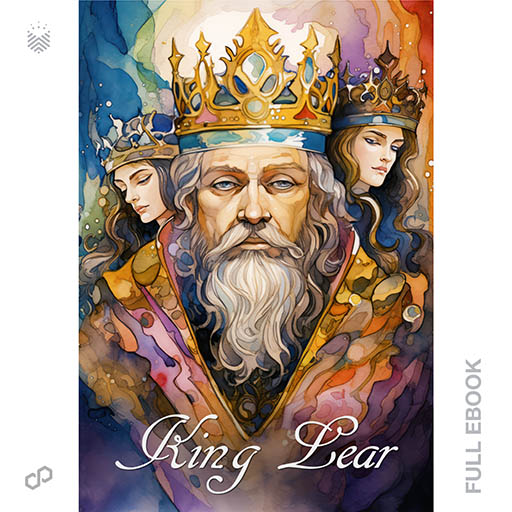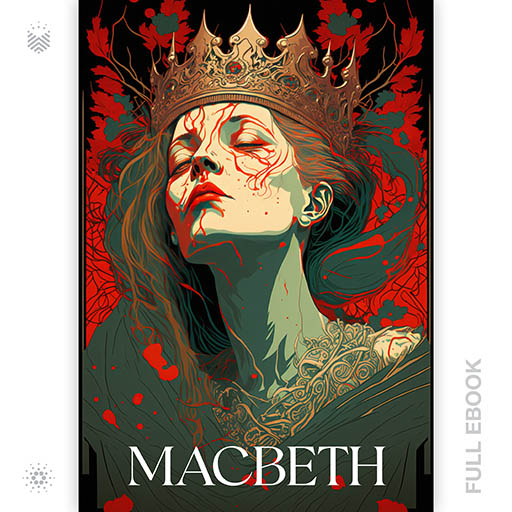Guy Fawkes
The Gunpowder Plot
Sold Out - Available On:
jpg.storeThe first of William Harrison Ainsworth’s seven “Lancashire novels”, the book is based on the Gunpowder Plot of 1605, an unsuccessful attempt to blow up the Houses of Parliament. Ainsworth embellished the facts of the actual event, and added supernatural elements to the story.
NOTE: The number of books available match the year of the Gunpowder Treason.
Description
From Wikipedia: The Gunpowder Plot of 1605, in earlier centuries often called the Gunpowder Treason Plot or the Jesuit Treason, was a failed assassination attempt against King James I by a group of provincial English Catholics led by Robert Catesby who sought to restore the Catholic monarchy to England after decades of persecution against Catholics.
The plan was to blow up the House of Lords during the State Opening of Parliament on 5 November 1605, as the prelude to a popular revolt in the Midlands during which King James’s nine-year-old daughter, Elizabeth, was to be installed as the Catholic head of state. Catesby may have embarked on the scheme after hopes of securing greater religious tolerance under King James had faded, leaving many English Catholics disappointed. His fellow contributors were John and Christopher Wright, Robert and Thomas Wintour, Thomas Percy, Guy Fawkes, Robert Keyes, Thomas Bates, John Grant, Ambrose Rookwood, Sir Everard Digby and Francis Tresham. Fawkes, who had 10 years of military experience fighting in the Spanish Netherlands in the failed suppression of the Dutch Revolt, was given charge of the explosives.
The plot was revealed to the authorities in an anonymous letter sent to William Parker, 4th Baron Monteagle, on 26 October 1605. During a search of the House of Lords in the evening on 4 November 1605, Fawkes was discovered guarding 36 barrels of gunpowder—enough to reduce the House of Lords to rubble—and arrested. Most of the conspirators fled from London as they learned that the plot had been discovered, trying to enlist support along the way. Several made a stand against the pursuing Sheriff of Worcester and his men at Holbeche House; in the ensuing battle Catesby was one of those shot and killed. At their trial on 27 January 1606 eight of the survivors, including Fawkes, were convicted and sentenced to be hanged, drawn and quartered.
Details of the assassination attempt were allegedly known by the principal Jesuit of England, Father Henry Garnet. Although he was convicted of treason and sentenced to death, doubt has been cast on how much he really knew of the plot. As its existence was revealed to him through confession, Garnet was prevented from informing the authorities by the absolute confidentiality of the confessional. Although anti-Catholic legislation was introduced soon after the discovery of the plot, many important and loyal Catholics retained high office during King James I’s reign. The thwarting of the Gunpowder Plot was commemorated for many years afterwards by special sermons and other public events such as the ringing of church bells, which evolved into the British variant of Bonfire Night of today.
Numbered eBooks: 1,605
Number of Unique Covers: 121
Number of 1:1 Covers: 60
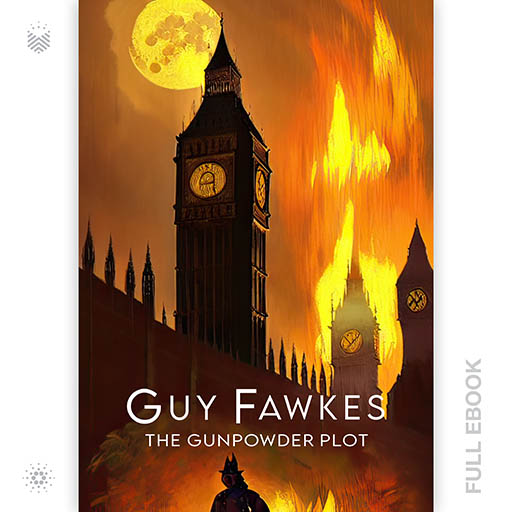
The 5th
18 Unique Designs
x 48 Numbered eBooks
= 864 NFT eBooks
(53.83% of Supply)

The Rebellion
15 Unique Designs
x 30 Numbered eBooks
= 450 NFT eBooks
(28.04% of Supply)

The Explosion
14 Unique Designs
x 13 Numbered eBooks
= 182 NFT eBooks
(11.34% of Supply)
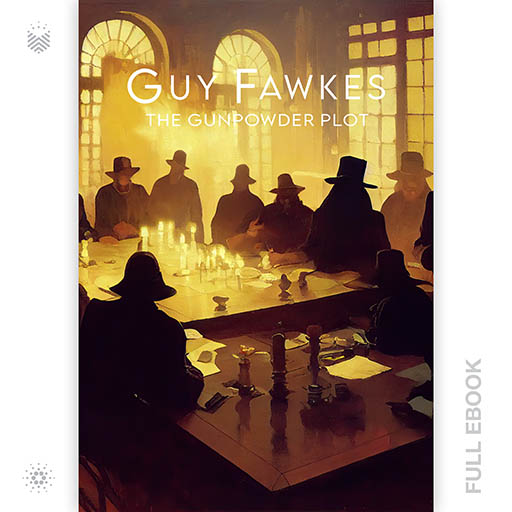
The Planning
7 Unique Designs
x 4 Numbered eBooks
= 28 NFT eBooks
(1.74% of Supply)
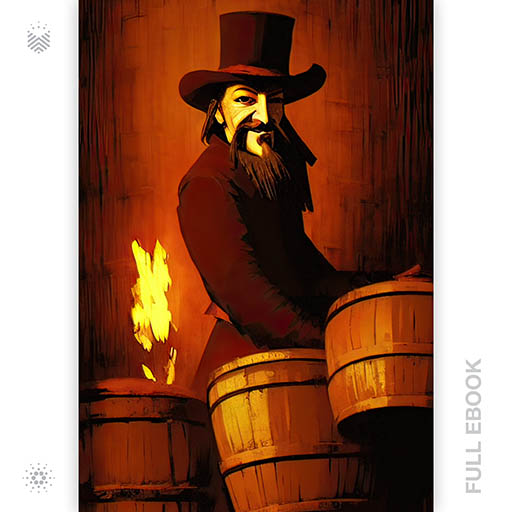
The Weapon
7 Unique Designs
x 3 Numbered eBooks
= 21 NFT eBooks
(1.31% of Supply)

The Mastermind
16 Unique Designs
x 1 Numbered eBooks
= 16 NFT eBooks
(1.00% of Supply)

The Persecution
13 Unique Designs
x 1 Numbered eBooks
= 13 NFT eBooks
(0.81% of Supply)

The Response
12 Unique Designs
x 1 Numbered eBooks
= 12 NFT eBooks
(0.75% of Supply)
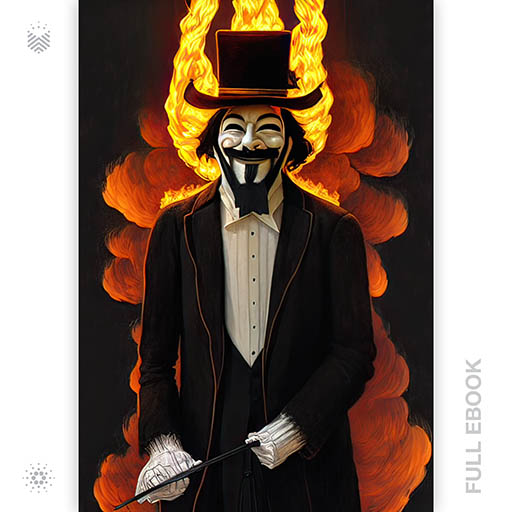
The Beginning
10 Unique Designs
x 1 Numbered eBooks
= 10 NFT eBooks
(0.62% of Supply)

The Disguise
9 Unique Designs
x 1 Numbered eBooks
= 9 NFT eBooks
(0.56% of Supply)
Details
Publisher : Book.io
Series: Flash Mint, Rulers and Revolutions
First Publication Date : 1605
Author : William Harrison Ainsworth
Genre : Novel
Language : English
Word Count : 1762
Format : DEA (Decentralized Encrypted Asset)
Read On : Book.io eReader dApp
Cover Art : Includes 4K hi-resolution book cover
Cardano Retail Price : 55 ADA
Purchase Limit: 2 per wallet
Cardano Policy ID : 7ac8bde493782b85bb4969e582f60e1e1b5a7eb0441691f5647439cb
Author Info
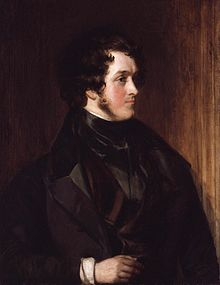
William Harrison Ainsworth
From Wikipedia: William Harrison Ainsworth (4 February 1805 – 3 January 1882) was an English historical novelist born at King Street in Manchester. He trained as a lawyer, but the legal profession held no attraction for him. While completing his legal studies in London he met the publisher John Ebers, at that time manager of the King's Theatre, Haymarket. Ebers introduced Ainsworth to literary and dramatic circles, and to his daughter, who became Ainsworth's wife.
Ainsworth briefly tried the … Read More
You might also like
by Nathaniel Hawthorne
“The Scarlet Letter” is a historical fiction novel written by Nathaniel Hawthorne, first published in 1850. Set in the 17th-century Puritan Massachusetts Bay Colony, the story explores the consequences of sin, guilt, and redemption.
The novel begins with the protagonist, Hester Prynne, being publicly shamed and forced to wear a scarlet letter “A” on her dress as a mark of her adultery. She refuses to reveal the identity of the father of her illegitimate child, Pearl. Despite her humiliat… Read More
by William Shakespeare
“Antony and Cleopatra” is a play by William Shakespeare that tells the story of the relationship between Mark Antony, one of the three rulers of the Roman Republic, and Cleopatra, the queen of Egypt. The play explores themes of love, politics, power, and betrayal, and it is set against the backdrop of the political turmoil in the Roman Republic. The play begins with Antony dividing his time between Rome and Egypt, where he is deeply in love with Cleopatra, but is also torn between his duty t… Read More
by William Shakespeare
“King Lear” is a tragedy written by William Shakespeare. It is one of his most famous and enduring plays, believed to have been written between 1605 and 1606. The play tells the story of King Lear, an aging monarch who decides to divide his kingdom among his three daughters based on their professions of love for him. However, the distribution of the kingdom leads to treachery, betrayal, and ultimately tragic consequences.
The central themes of “King Lear” include the nature of power, the… Read More
by William Shakespeare
Macbeth, a William Shakespeare tragedy, chronicles the bloody rise and fall of the Scottish warrior Macbeth. Guided by a prophecy foretold by three witches and his ambitious wife, Macbeth pursues power and the throne. He soon discovers that the prophecy and his ambition have clouded his judgment. Partly inspired by actual events, Macbeth is Book 2 of our Shakespeare series.
Read More





